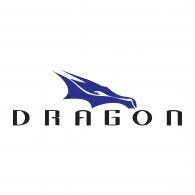A great day for the people at the SpaceX Complex as they launched their Falcon 9 reusable rocket with the new Crew Dragon capsule to goto the International Space Station on its first test flight Unmanned for this test (see details of the mission below). the Lift off and into orbit went as expected and it is all going well so far tomorrow will see the Crew Dragon Un-Manned Capsule will dock with the International Space Station. NASA and SpaceX are very excited about this as its finally using the launch Complex a 39 A as it was intended for. as a Space Enthusiast I myself am glad to see the USA coming back with manned space flights and what will be coming in the future with SpaceX Big pans for the Rockets with their long Distance rocket for Moon and Mars Missions. the Falcon 9 Rocket landed back on earth on the drone ship all intact ready for its next mission.
I have linked the stream fed into this post and i am exited to see what else is to come i recommend you follow SpaceX and NASA journey on YouTube with their live streams and videos.
MISSION OVERVIEW
SpaceX is targeting Saturday, March 2 for launch of Crew Dragon’s first
demonstration mission from Launch Complex 39A (LC-39A) at NASA’s
Kennedy Space Center in Florida. This test flight without crew on board the
spacecraft is intended to demonstrate SpaceX’s capabilities to safely and
reliably fly astronauts to and from the International Space Station as part of
NASA’s Commercial Crew Program.
The instantaneous launch window opens at 2:49 a.m. EST, or 7:49 UTC, and a
backup instantaneous launch opportunity is available on Tuesday, March 5 at
1:38 a.m. EST, or 6:38 UTC. Following stage separation, SpaceX will attempt
to land Falcon 9’s first stage on the “Of Course I Still Love You” droneship,
which will be stationed in the Atlantic Ocean.
Crew Dragon, designed from the beginning to be one of the safest human
space vehicles ever built, benefits from the flight heritage of the current iteration
of Dragon, which restored the United States’ capability to deliver and return
significant amounts of cargo to and from the International Space Station.
Dragon has completed 16 missions to and from the orbiting laboratory.
To support human spaceflight, Crew Dragon features an environmental control
and life support system, which provides a comfortable and safe environment for
crew members. The spacecraft is equipped with a highly reliable launch escape
system capable of carrying crew to safety at any point during ascent or in the
unlikely event of an anomaly on the pad. While the crew can take manual
control of the spacecraft if necessary, Crew Dragon missions will autonomously
dock and undock with the International Space Station. After undocking from the
space station and reentering Earth’s atmosphere, Crew Dragon will use an
enhanced parachute system to splashdown in the Atlantic Ocean.
On this first test flight, Crew Dragon will transport roughly 400 pounds of crew
supplies and equipment to the International Space Station. In addition, the
spacecraft will be carrying mass simulators and an anthropomorphic test device
(ATD) that is fitted with sensors around the head, neck, and spine to gather
data ahead of SpaceX’s second demonstration mission with NASA astronauts
on board the spacecraft.
Falcon 9 and Crew Dragon will launch from Launch Complex 39A at NASA’s
Kennedy Space Center, which has a long and storied history dating back to the
1960s. In 2014, SpaceX signed a 20-year lease for use of LC-39A. Since then,
SpaceX has made significant upgrades to modernize the pad’s structures and
ground systems, while also preserving its important heritage. Extensive
modifications have been made to LC-39A, including removal of the existing
rotating service structure and installation of a new access arm from which crew
will board the spacecraft.
MISSION TIMELINE (all times approximate)
– 45:00 SpaceX Launch Director verifies go for propellant load
– 37:00 Dragon launch escape system is armed
– 35:00 RP-1 (rocket grade kerosene) loading begins
– 35:00 1st stage LOX (liquid oxygen) loading begins
– 16:00 2nd stage LOX loading begins
– 07:00 Falcon 9 begins engine chill prior to launch
– 05:00 Dragon transitions to internal power
– 01:00 Command flight computer to begin final prelaunch checks
– 01:00 Propellant tank pressurization to flight pressure begins
– 00:45 SpaceX Launch Director verifies go for launch
– 00:03 Engine controller commands engine ignition sequence to start
– 00:00 Falcon 9 liftoff
00:58 Max Q (moment of peak mechanical stress on the rocket)
02:35 1st stage main engine cutoff (MECO)
02:38 1st and 2nd stages separate
02:42 2nd stage engine starts
07:48 1st stage entry burn
08:59 2nd stage engine cutoff (SECO-1)
09:24 1st stage landing burn
09:52 1st stage landing
11:00 Dragon separates from 2nd stage
Crew Dragon will perform a series of phasing maneuvers to gradually approach
and autonomously dock with the International Space Station on Sunday, March
3 at approximately 6:00 a.m. EST. Filled with about 400 pounds of crew
supplies and equipment, Dragon will remain docked with space station for five
days.
Crew Dragon will autonomously undock with the International Space Station on
Friday, March 8 at approximately 2:30 a.m. EST. About five hours after Dragon
departs the space station, it will conduct its deorbit burn, which lasts
approximately 15 minutes. Dragon will reenter Earth’s atmosphere and
splashdown in the Atlantic Ocean about 35 to 40 minutes later, or at
approximately 8:45 a.m. EST.




Comments are closed